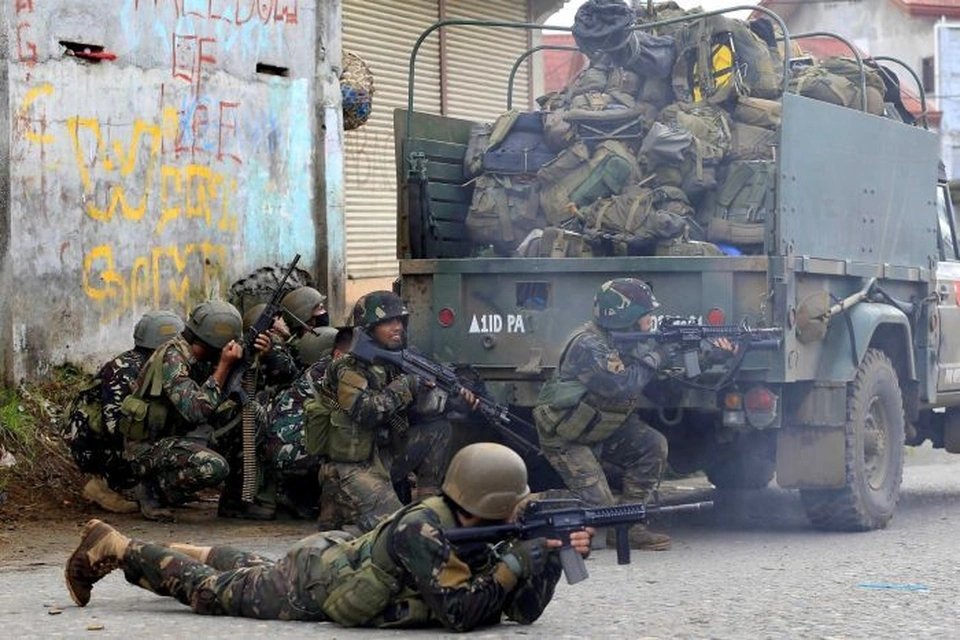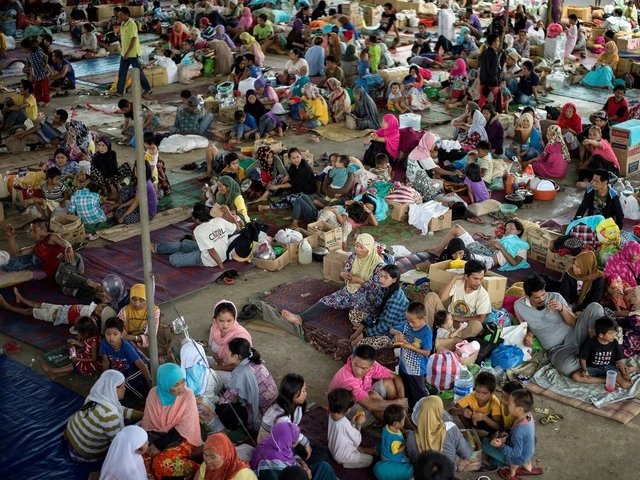(Dan Tri) – The fighting between the Philippine army and rebels affiliated with the self-proclaimed Islamic State (IS) in Marawi has now entered its fourth week, but the government’s armed forces are still fighting.
Philippine soldiers hunt for rebels in Marawi city (Photo: Getty)
As of today, June 14, the conflict between the Philippine government army and pro-IS rebel groups such as Maute and Abu Sayyaf in Marawi city on the island of Mindanao has entered its fourth week. Compared to the time when the conflict
Despite President Rodrigo Duterte’s drastic efforts to declare martial law across the entire island of Mindanao, as well as the government’s mobilization of hundreds of soldiers and modern military equipment such as tanks and helicopters,
Difficult combat terrain

The combat terrain in the city area causes many difficulties for the Philippine government army (Photo: Reuters)
According to Chief of Staff of the Armed Forces of the Philippines (AFP) Eduardo Ano, peace in Marawi will not be achieved overnight but will take time.
`We have complete control over the entire area (Marawi) but have not been able to wipe out the rebels because the operational terrain is in the city,` Sun Star quoted Mr. Ano as saying.
Previously, in an announcement released on the official website, the Philippine army said soldiers had to hunt down rebel fighters in every corner of Marawi to ensure that they could not hide in houses.
Mr. Ano commented that it was the rebel gunmen’s hiding position that caused difficulties for Philippine soldiers and this was the reason why they could not `attack quickly and destroy` as planned.
Also according to Mr. Ano, deploying combat activities in urban areas is not as simple as deploying in rural areas.
Rebel tactics

Screenshot of a propaganda video released by IS showing rebel fighters hiding inside a house to fight Philippine government troops (Photo: Reuters)
Commenting on the slow advance of the Philippine armed forces, Newsweek said that the rebel fighters in Marawi have certain advantages and this is the reason why only a small group of rebels died.
In terms of weapons, the Maute group dealt with the government army with US-made weapons and ammunition that the group looted from prisons and police stations.
One of the Maute group’s first moves when it began attacking Marawi City was to release 100 prisoners from a prison, many of whom were former Maute members or supporters.
To increase their forces, the rebel group also called on more foreign fighters to support them.
Most of Maute’s fighters are in their 20s, but in the current context of needing to increase the number of members, this group even recruits children to participate in campaigns in Marawi.
One tactic the Maute group used in their clashes with government troops was to kidnap civilians as hostages, including priests.
“The government army is forced to move slowly because some areas may still have civilians inside.
According to the latest source from the Philippine military, most of the 200,000 residents in Marawi have evacuated to avoid fierce fighting, but there are still about 1,500 people trapped in the city, of which hundreds have been rebels.
Long term plan

Thousands of Marawi residents had to evacuate to safe areas (Photo: AFP)
AFP Chief of Staff Eduardo Ano said the rebels had used the tactic of hoarding food as well as weapons in churches, schools, civilian positions as well as tunnel networks to prepare for an attack.
According to Cetus News, one of the purposes of the Maute rebel group when attacking Marawi and choosing to confront the government army was because they wanted to `demonstrate their ability` to IS.
IB Times quoted a source from the Philippine government as saying that the conflict in Marawi has so far left 26 civilians, 58 soldiers and 202 rebels dead.
Success
Synthetic
